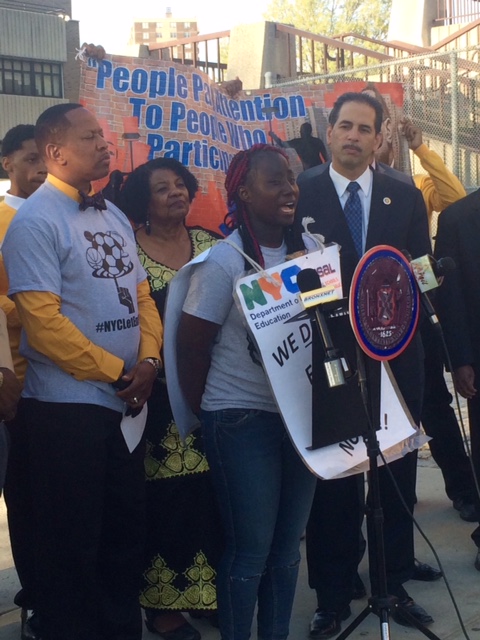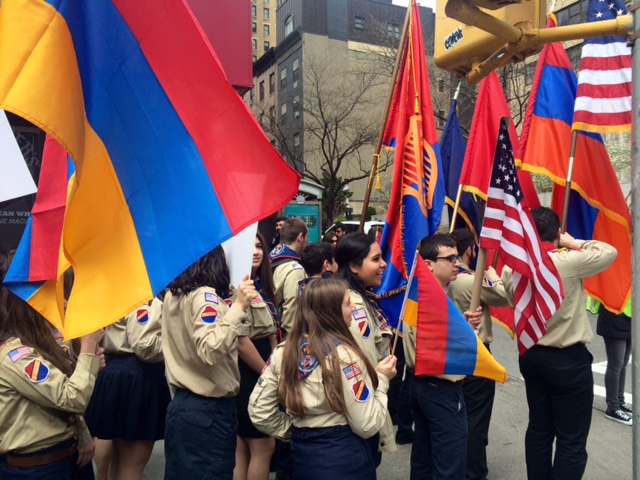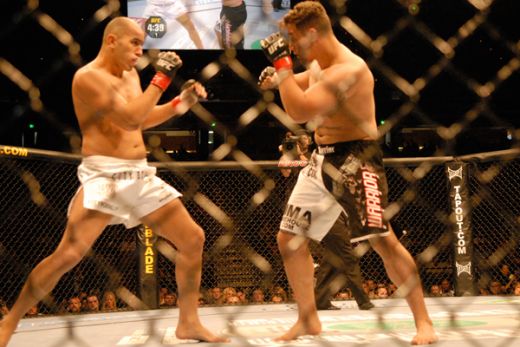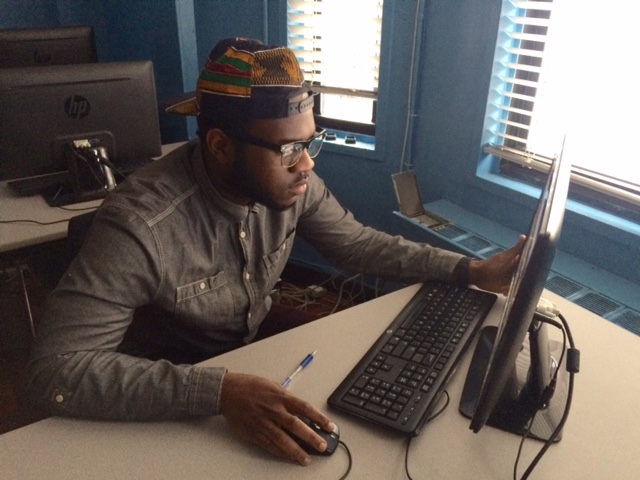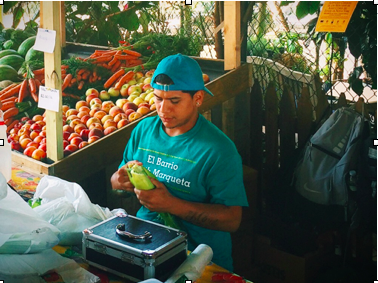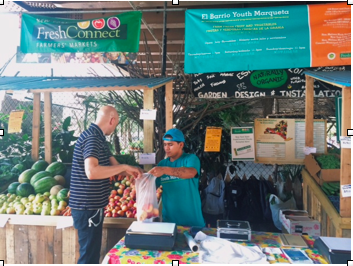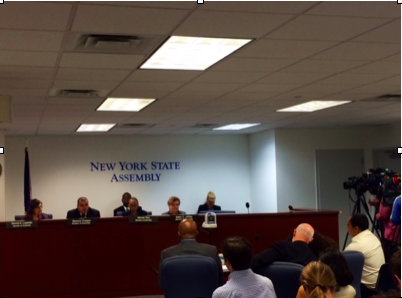On Good Friday in April, 18-year-old Racheal Moore and her two year old son Aiden showed up to the Mother and Child Crisis Center at the Covenant House, a shelter for homeless youth in Manhattan, with a backpack full of books, a suitcase full of clothes, and a stroller full of toys. This would be Moore’s first time living at a shelter and she said she didn’t know what to really expect, but she knew it would be better than “bumming around” at friends’ houses.
Moore propped up Aiden on her hip, as they were brought downstairs into the living area. They were assigned a small dorm room that has two twin beds, a compact closet, and a tiny bathroom. Moore thought this would be her home for the next month or “at least for the night.”
Moore, a senior at Grand Street Campus High School in Bushwick, Brooklyn, mentioned that her moving day falls exactly on her first day of spring break. But, instead of hanging out with her friends, Moore said she has to spend her break getting herself and Aiden acclimated to their new home. Aiden doesn’t really mind moving from shelter to shelter because he loves playing with the other kids and doesn’t really understand what is going on, she said. “I am the one who always feels like an outsider,” Moore said. “I have been told that I was a stranger since I was young so when you are an outsider, you are used to it. What else is so tough to bear at this point?”
Teen pregnancy in New York City has reached an all-time low over the last decade. The Health Department unveiled a report in 2013 stating that the teen pregnancy rate has fallen 30 percent in the last ten years, including five percent just from 2010 to 2011. Between 2011 and 2012, the teen pregnancy rate in the city declined from 98.7 pregnancies per 1,000 females to 69.2 pregnancies per 1,000 females. However, there are still more than 17,000 teen pregnancies annually and 87 percent are unintended, according to the report.
Although the rate of teenage birth has declined rapidly in the last decade, the thousands of teenage mothers in the city are more likely to be homeless and economically unstable. Almost half of homeless heads of household in New York City shelters were teenage mothers, according to a report by The Institute for Children and Poverty. The report revealed that over the last decade the number of these women residing in the shelter system increased to 47 percent. Some of these young mothers like Moore receive no support from their family, forcing them to live from shelter-to-shelter during pregnancy and motherhood.
When Moore first arrived at the Covenant House, she said she had to get used to living with the other moms and obeying the structure of the program. Her priority was just trying to figure out her next move and plan what was best for her son, she said.
On Tuesday nights at the Covenant House, the mothers who live at the shelter are supposed to gather around for a workshop put on by the counselors. On the Tuesday after Moore moved into the shelter, she decided to not go to the workshop because she doesn’t want to leave Aiden in the day-care for “any longer” that day. She ended up sitting in an extra playroom at the shelter with two other mothers and their children. The room was narrow and packed full of plastic, “Playskool” toys, books, and office supplies. It’s the second-time that the moms were meeting each other.
Katherine Perez, 18, pushed her stroller into the room and sat down on a wooden, child’s chair. She took a long sigh of relief. “It’s just nice to sit and not have to do anything for a minute,” Perez said. Since March, Perez has been staying at the Covenant House with her twin boys, Damien Alexander and William Jacob. She gave birth to the twins on March 9, 2015 and said that she had to find a new place to live when she gave birth because the shelter she was staying at could not provide for her and her babies. “I was completely by myself during the pregnancy,” Perez said.
Tiarra Thomas, 20, and her 10-month-old daughter Kyla Williams sat in the corner of the room. Thomas told Perez that she is “lucky right now because newborns just sleep and sleep.” Thomas peered into the twin’s stroller and gushes about how tiny they are and how fast they will grow up.
For Thomas, she had been at the Covenant House for five weeks and plans on being there up to 18 months if she is able to find a job through the Rights of Passage program. Each day, Thomas is given six hours to go out and look for a job while Kyla is at the shelter’s day-care. So far, Thomas said she has options but nothing is permanent.
Moore’s son Aiden and Thomas’ daughter Kyla played on the ground with a plastic piano and a broken puzzle. Aiden hugged Kyla’s head and Kyla started to cry. Moore yelled at Aiden and told him to get away from Kyla. Then, Aiden started to cry. The mothers don’t even seem phased by the crying. Perez’s twins don’t even wake up. “This is normal for us,” Thomas chuckled.
The three mothers started to talk about what is “normal” for them and quickly realize that they are more alike than they realize. Moore, Thomas, and Perez are used to moving from shelter-to-shelter. Even though they tried to convince themselves that they have the help from their boyfriends and family members, they all agreed that they have “nothing” and “nobody” to depend upon except for themselves and their children. The three young women all said that they didn’t grow up with love and stability. They had absent mothers and incarcerated fathers.
“They [the children] provide us with love and we want to provide them with stability,” Moore said to the group. Thomas pointed to her right shoulder. In skinny, black letters, a tattoo reads, ““What doesn’t kill me makes me stronger.” Thomas said, “This is my motto. Kyla wasn’t expected but she’s accepted and that’s my takeaway from all of this.” Moore and Perez laugh and nod their heads. “It’s so true, girl. It’s so true,” Moore said.
When Moore was five years old, her mother put her on a plane by herself and sent her from her homeland in Jamaica to the United States to live with her father. She doesn’t really know why she had to leave Jamaica or why her mother didn’t accompany her to the United States. “The only thing I remember is playing with this little toy airplane in the streets of Jamaica when I was younger and my mom said you know you are going to get on one of those soon. That’s all I remember her saying to me,” Moore said. “I think she wanted me to have a better life, but I don’t know anymore.”
Moore arrived in Florida and her father picked her up at the airport. Within a few months, Moore’s father was arrested and she was sent to live in New York City with her father’s girlfriend. Her father’s girlfriend didn’t’ want her and sent her to live with her sister in Brooklyn when she was only six years old, according to Moore. From the moment that she arrived at what she calls her aunt’s house, using air quotes to describe the word “aunt”, Moore felt un-welcomed and unloved. The aunt and her kids never made her feel like she belonged there and it started to take a toll on her from a very young age. “I had no family. My mother wasn’t around. My father wasn’t around. I used to cry sometimes. Who wants to be reminded that they don’t have anyone when they’re just a kid,” Moore said. “Why was I not loved?”
For the next nine years, Moore said that she lived in the “destructive aunt’s house” on-and-off. “I didn’t belong to anyone and my aunt made me know that at a very young age,” Moore said. She said that aunt “tried” to kick her out when she was 12 and 14 for “bad behavior.”
When she was a sophomore in high school, she met Aiden’s father Darren. Moore said that she was waiting outside of a hair salon and he kept trying to talk to her and get her attention. After a few minutes, Moore said she “needed the company” and let Darren walk her home. The two exchanged numbers and started talking. Moore, who is five years younger than Darren, said the relationship moved very fast and they became sexually active right away. “It was more like comfort and just feeling loved. It was more like just feeling like somebody wanted me,” Moore said.
In the first week of February 2012 and Moore realized that she hadn’t gotten her period in a while. At that time, Moore was living with her aunt and said she wasn’t educated about her menstrual cycle or birth control to understand what was happening with her body. “My aunt freaked out when I told her that I hadn’t gotten my period in like a month or so and she just told me to get a pregnancy test and that was it,” Moore said.
For the next nine months of her pregnancy, Moore continued to go to school and tried to “pretend” that she wasn’t pregnant. “I was in denial and just thought ‘How in the world did I get pregnant?,” Moore said. “I was shocked up until the day I gave birth. I did not think I was pregnant.”
Although she wanted to pretend like she wasn’t pregnant, Moore said it was her pregnancy that made her motivated to excel in school and move away from her “terrible” living environment. Moore moved around from various friends’ and relative houses during her pregnancy, but said she never had a stable living that lasted longer than a few months. When she gave birth to Aiden on October, 11, 2012, Moore wasn’t prepared but received some support from her extended family. “Once you have a child, your life doesn’t slow down. It’s not like are you ready but you have to be ready. Even if I wasn’t ready, I had to be ready,” Moore said.
For the next two years, Moore attended Saturday school to catch-up on her schoolwork and said that she was able to continue going to school because of the help of others. “It was hard, but when I got any help, I just had to take it and be grateful,” Moore said. She added that she wished Aiden’s dad would have helped more but he got arrested when Aiden was six months old. Moore said that he tried to help out financially, but took “the illegal route and ended up incarcerated.”
On Mother’s Day morning this year in East New York, Brooklyn, in a shelter for young mothers named Independence Inn II, 18-year-old Racheal Moore glided bright purple lipstick over her lips and glanced at herself in the mirror. She pulled out her cracked Samsung Galaxy smartphone and pouted her lips for a “selfie.” Her two-year-old son tugged at her metallic gold leggings. “What do you want, Aiden?,” Moore said. She grabbed Aiden’s blue and red backpack from the bed and stuffed it with crackers, granola bars, and three cans of cranberry juice. Pulling the backpack over her robust shoulders, she poured three more cans of cranberry juice in a towering, blue, plastic, sippy cup, the kind that many tourists sport in Las Vegas. “I need wipes,” Moore said to the woman working at the front desk of the shelter, “Do we not have any more wipes?”
Aiden clutched a budding yellow and pink rose in his hands. His tiny fingers wrapped around the long, rough stem and the patches where thorns had been trimmed away. “Mom!,” he screamed, as he handed it to her in exchange for the sippy cup. The two walked out the shelter door holdings hands. As they walked along Grant Avenue, neighbors kindly yelled out, “Happy Mother’s Day!” as the two passed by each stoop. When they reached Atlantic Avenue, Moore told Aiden to not let go of her hand. The street was flooded with vendors selling bundles of roses, balloons, and gift baskets for Mother’s Day. “I don’t know this area very well, but I guess we can go to Popeyes for lunch,” Moore quietly said to herself. “It’s a special day, so why not?”
Moore and her son had arrived at Independence Inn II two weeks earlier. It was the second shelter that they had lived at in the last two months. This time, Moore thought things would be different. “This place will allow me to get on my feet, I know it,” Moore said. The Independence Inn is a part of the organization SCO Family of Services that houses young women with children at three shelter located in Brooklyn and Queens.. This shelter offers the young women and their children the opportunity to live there for a year and provides them with more freedom when it comes to a nightly curfew, eating schedules, working, day-care, and more. “I know I have to be here because of my situation, but still, I want to be able to have a place I can call my own,” Moore proclaimed. “I want that for myself and for my son more than anything right now. It’ll happen one day.”
At the Independence Inn, Moore said she feels like over the last three weeks it is slowly becoming her home and she is becoming more connected to the other mothers. But, everyone is “kinda doing their own thing” and it’s different than the community at the Covenant House. “I just have to think that it’s me and Aiden,” Moore said. “No one else is really going to be there for me so I can’t get attached.”
It’s been two years since Moore gave birth to Aiden. This year’s Mother’s Day, she said it’s “important but not that big of a deal.” She said that the shelter tried to make the weekend special by bringing in a life coach who talked to the women and then pampered them with a “spa day” of makeup lessons and eyebrow shaping.
The two arrived at Popeyes Lousiana Kitchen about half of a mile away. The fast-food chain was completely vacant. Moore joked that most people don’t want to come to Popeyes for a “special Mother’s Day meal,” but she doesn’t care because the chicken is just so good. Her and Aiden found a booth in the back of the room by a window. Aiden gazed out the window, while Moore played with her phone. When the food arrived, the two sat across from each other. Aiden closely watched his mom as she dripped grape jelly over her fried, battered chicken and Cajun-style fries. “Give me,” Aiden said, as he motioned his hand to the jelly. She opened up a packet of grape jelly and spurted it on a French fry. He bopped his head up and down in excitement. “He just wants to be like me,” she laughed.
After about twenty minutes, the two finished up their meal. Aiden jumped out from the booth and ran over to an empty table. He climbed up on a chair and started to crawl across the table. “You better get down from there,” Moore screamed at him. “You best not want me to have to come get you.” She wiped off some jelly from her gold leggings and white, mesh jersey crop top that read, “BOSS” in shiny, gold lettering. It’s almost 1pm and she said she’s ready to leave so that she can visit her boyfriend later that afternoon. The two have been going out for less than a week and she said he’s a “bad boy” but means well. “We both have two-year-old sons, so we have that in common,” Moore said. “It’s hard to find someone that is going to be so accepting but he understands.”
Moore is expected to graduate from high school in August and said she has “big plans” for her life and for Aiden’s life after that. She wants to attend community college next year and receive her Associate’s Degree so that she can transfer to Albany State or John Jay College to study law. “When I am 25, he is going to be 9 years old. I will get to live my life. By the time I am 30, I am going to have my career and it is just like I am still young and I still get to have time with my child and be successful. Everything will be booming for me then,” Moore said.

